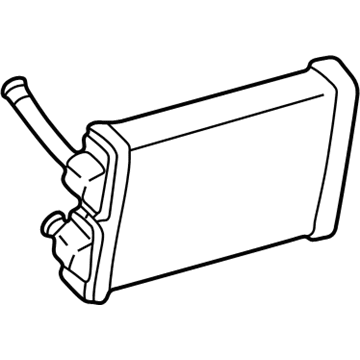×
ToyotaParts- Hello
- Login or Register
- Quick Links
- Live Chat
- Track Order
- Parts Availability
- RMA
- Help Center
- Contact Us
- Shop for
- Toyota Parts
- Scion Parts
My Garage
My Account
Cart
OEM 2000 Toyota Camry Heater Core
HVAC Heater Core- Select Vehicle by Model
- Select Vehicle by VIN
Select Vehicle by Model
orMake
Model
Year
Select Vehicle by VIN
For the most accurate results, select vehicle by your VIN (Vehicle Identification Number).
1 Heater Core found
 Product Specifications
Product Specifications- Other Name: Unit Sub-Assembly, Radiator; HVAC Heater Core; Unit Sub-Assembly, Heater Radiator
- Part Name Code: 87107A
- Item Weight: 1.60 Pounds
- Item Dimensions: 13.7 x 12.1 x 9.2 inches
- Condition: New
- Fitment Type: Direct Replacement
- SKU: 87107-07010
- Warranty: This genuine part is guaranteed by Toyota's factory warranty.
2000 Toyota Camry Heater Core
Looking for affordable OEM 2000 Toyota Camry Heater Core? Explore our comprehensive catalogue of genuine 2000 Toyota Camry Heater Core. All our parts are covered by the manufacturer's warranty. Plus, our straightforward return policy and speedy delivery service ensure an unparalleled shopping experience. We look forward to your visit!
2000 Toyota Camry Heater Core Parts Q&A
- Q: How to service and repair the heater core on 2000 Toyota Camry?A: To service the heater core, drain some engine coolant, disconnect the A/C water hoses, and remove the lower instrument panels. Then, release the heater protector, remove screws and clamps, and take out the heater radiator. Installation is the reverse of removal.













